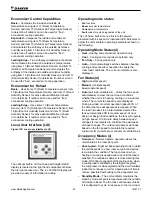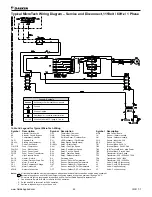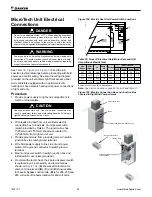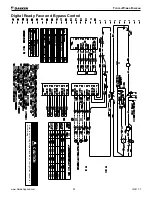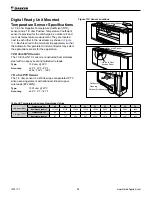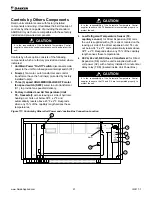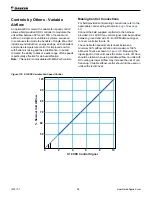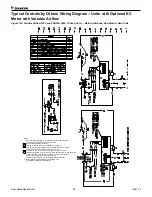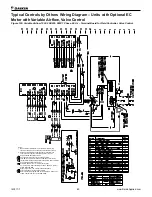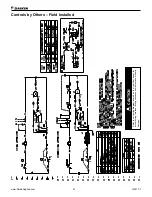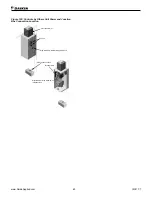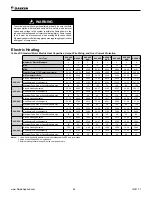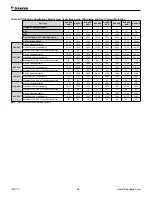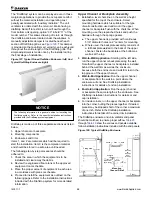
www.DaikinApplied.com 57
IM 817-7
Controls by Others Components
Daikin unit ventilators come with factory installed
components and wiring. It facilitates the field hookup of
controls by others, capable of providing the standard
ASHRAE II cycle that are compatible with these factory
installed and pre-wired components.
CAUTION
It is the responsibility of the Automatic Temperature Control
supplier to ensure the controls operates correctly and protect the
unit.
Controls by others option consists of the following
components which are factory provided and wired where
indicated:
1
Unit Main Power “On-Off” switch:
disconnects main
power to the unit. Non-fused power interrupt switch (S1)
2
Fuse(s):
fan motor, auto transformer and control
transformer have the hot line(s) protected by factory
installed fuse(s).
3
Three (3) speed HIGH-MEDIUM-LOW-OFF motor
fan speed switch (SW2):
wired to auto transformer
(X1), to provide fan speed/air delivery.
4
Factory installed Low Air Temperature (limit
T6 - freezestat):
across leaving air side of hydronic
heating coil. Cuts out below 38°F ± 2°F and
automatically resets above 45°F ± 2°F. Responds
when any 15% of the capillary length senses these
temperatures.
CAUTION
It is the responsibility of the Automatic Temperature Control
supplier to ensure the T6 freezestat is incorporated properly to
protect the unit.
5
Low Refrigerant Temperature Sensor (T4 -
capillary sensor):
for Direct Expansion (DE) coils
the unit is supplied with a (T4) sensor, located on the
leaving air side of the direct expansion coil. T4 cuts
out below 34°F ± 2°F and automatically resets above
38°F ± 2°F. Responds when any 15% of the capillary
length senses these temperatures.
6
40 VA, 24 volt, NEC class 2 transformer:
for Direct
Expansion (DE) coils the unit is supplied with a 24
volt power (X2), with a factory installed 5 minute timer
delay relay (TDR) (located inside Unit Power Box).
CAUTION
It is the responsibility of the Automatic Temperature Control
supplier to ensure that T4 and R4 are incorporated properly to
protect the unit.
Figure 117: Controls by Others Unit Power and Junction Box Connection Location
1
2
3
4
5
6
6
Motor

